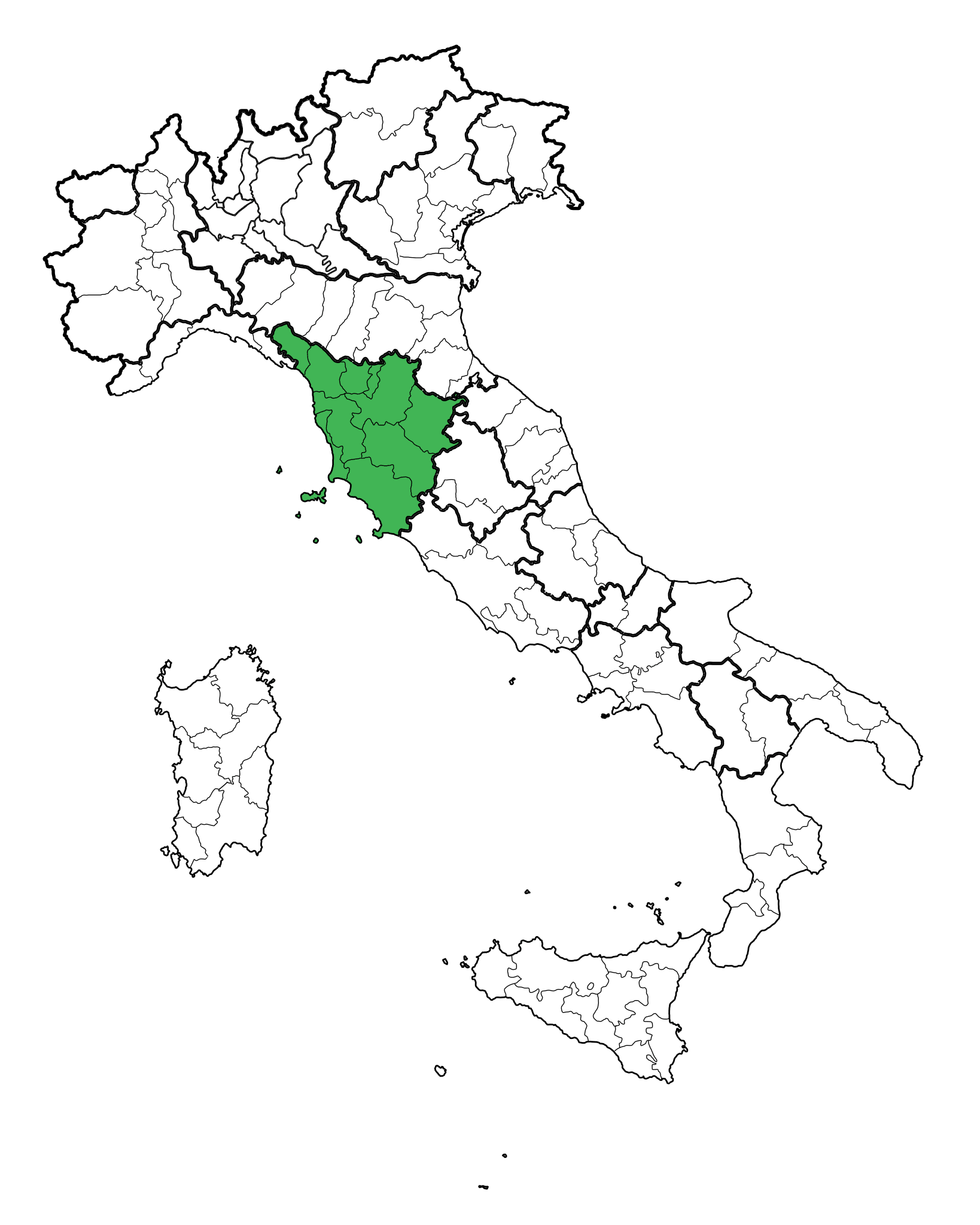
/toskˈana/
- Ansonica
- Malvasia Bianca
- Trebbiano Toscano
- Vermentino
- Vernaccia di San Gimignano
- Abrusco
- Aleatico
- Barsaglina
- Bonamico
- Canaiolo Nero
- Ciliegiolo
- Colorino
- Foglia Tonda
- Mammolo
- Pugnitello
- Sangiovese
- Vermentino Nero
- Tuscany has a winemaking tradition dating back centuries, with vine cultivation and wine production documented since Etruscan and Roman times. This rich historical legacy has shaped the region’s winemaking techniques, grape varieties, and wine styles.
- Tuscany is home to some of Italy’s most famous grape varieties, including Sangiovese, which is the backbone of many Tuscan wines. Sangiovese reigns supreme in Tuscany, particularly in renowned wine regions like Chianti, Brunello di Montalcino, and Vino Nobile di Montepulciano. Each of these regions showcases Sangiovese’s versatility, from the fresh and fruity Chianti to the powerful and age-worthy Brunello.
- Tuscany’s diverse terroir, characterized by varying altitudes, soil types, and microclimates, allows for the production of a wide range of wines. From the coastal plains of Bolgheri to the hillside vineyards of Chianti Classico and the rugged terrain of Montalcino, each area imparts its unique character to the wines.
- Chianti DOCG
- Carmignano DOCG
- Chianti Classico DOCG
- Vernaccia di San Gimignano DOCG
- Vino Nobile di Montepulciano DOCG
- Brunello di Montalcino DOCG
- Morellino di Scansano DOCG
Tuscany is characterized by picturesque landscapes of rolling hills, which provide ideal conditions for vine cultivation. These hillsides offer varying exposures to sunlight, soil types, and elevations, allowing vignerons to cultivate a wide range of grape varieties and produce wines with distinct terroir expressions.
Tuscany’s vineyards span a range of altitudes, from sea level along the coast to over 1,000 meters (3,280 feet) in the Apennine foothills. Altitude variation influences temperature gradients, sunlight exposure, and vine stress, contributing to the complexity and diversity of Tuscan wines.
The combination of Tuscany’s diverse geography, soil types (including limestone, clay, and sandstone), and microclimates results in a rich tapestry of terroirs. Each subregion, from the volcanic soils of Mount Amiata to the alluvial plains of the Maremma, imparts unique characteristics to the wines produced there.
Visual Profiles:




- Lorem ipsum dolor sit amet, consectetur adipiscing elit. Ut elit tellus, luctus nec ullamcorper mattis, pulvinar dapibus leo.
- Lorem ipsum dolor sit amet, consectetur adipiscing elit. Ut elit tellus, luctus nec ullamcorper mattis, pulvinar dapibus leo.
Visual Profiles:




- Total Production: 2.657.000 Hectolitres
- White Wine: 15%
- Rose Wine and Red Wine: 85%
